5 Things You Should Not Do When Measuring Flour for Bread + Video
Sneak Peek: Find out if you measure flour wrong, why it matters, and how to measure it correctly, especially when making bread with a bread machine.
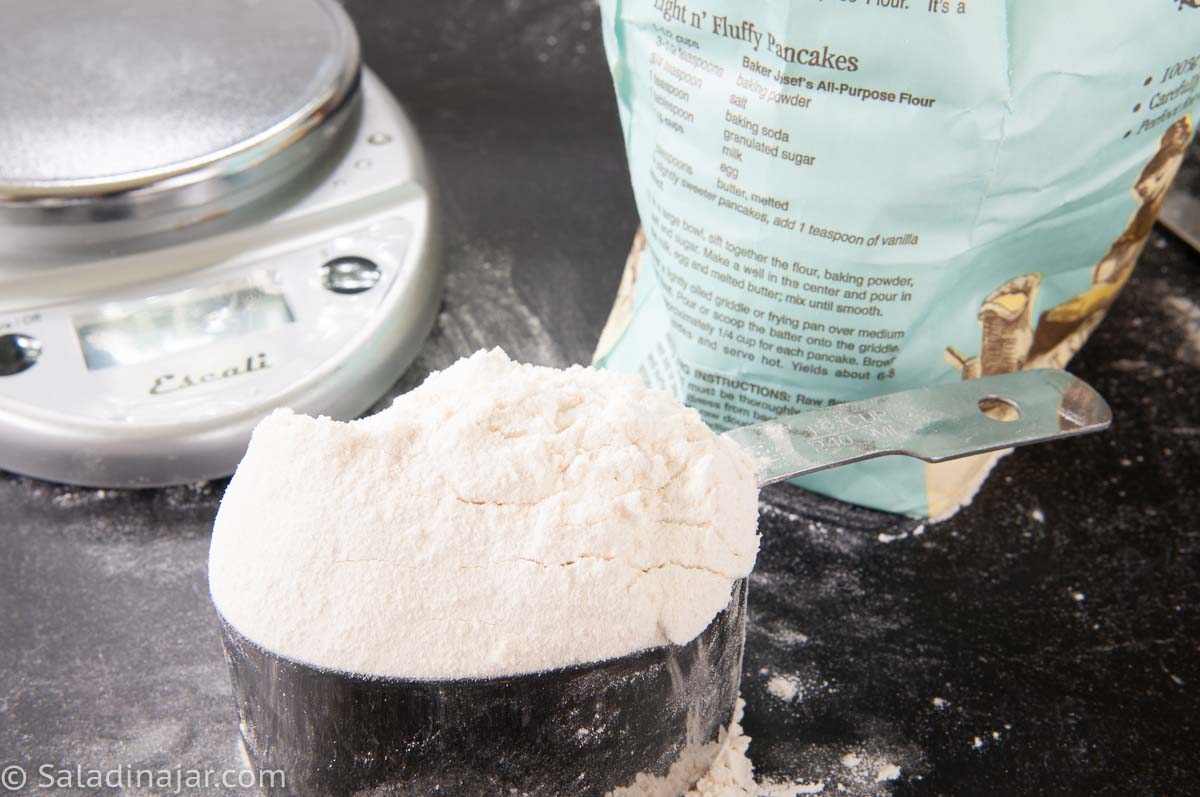
As an Amazon Associate, I earn from qualifying purchases.
Do you know what a “scooper” is? Hint: It has nothing to do with walking a dog. Don’t be ashamed if you don’t know or you are one. I’ll admit to using a measuring cup to reach into the flour canister or bag and directly filling the cup when I’m in a hurry. That’s a “scooper.”
Does it matter how you measure flour for a bread recipe?
Yes. Careless measuring often results in a tablespoon or more flour per cup than needed. If you enjoy low-rising bread that’s too dry, heavy, or dense, please ignore this advice.
Is measuring flour for bread any different from measuring flour for a cake or cookies? Not really. The basic principles are the same. However, the flour ratio is higher for bread, so mistakes are magnified to the detriment of texture and taste.
Unfortunately, poor measuring techniques are responsible for many bread-baking failures. Let’s take a closer look at different methods of measuring from a bread baker’s perspective.
Happy Bakers Speak Up
I messaged you a while back wondering if you had a “fix” for my bread that kept falling during baking and leaving a well in the loaf. You had several ideas that could be happening including too much flour being added. You suggested that I get a kitchen scale to measure the amount of flour I was using. I purchased one and my problem has been solved! 1 to 2 tablespoons really does make a huge difference. Beautiful loaf every time now. I would never have guessed that small amount of flour could make such a big difference. Thank you so much! —CAROLE H.
Five Practices To Avoid When Measuring Flour for Bread
1. Don’t Be a “Flour Scooper “
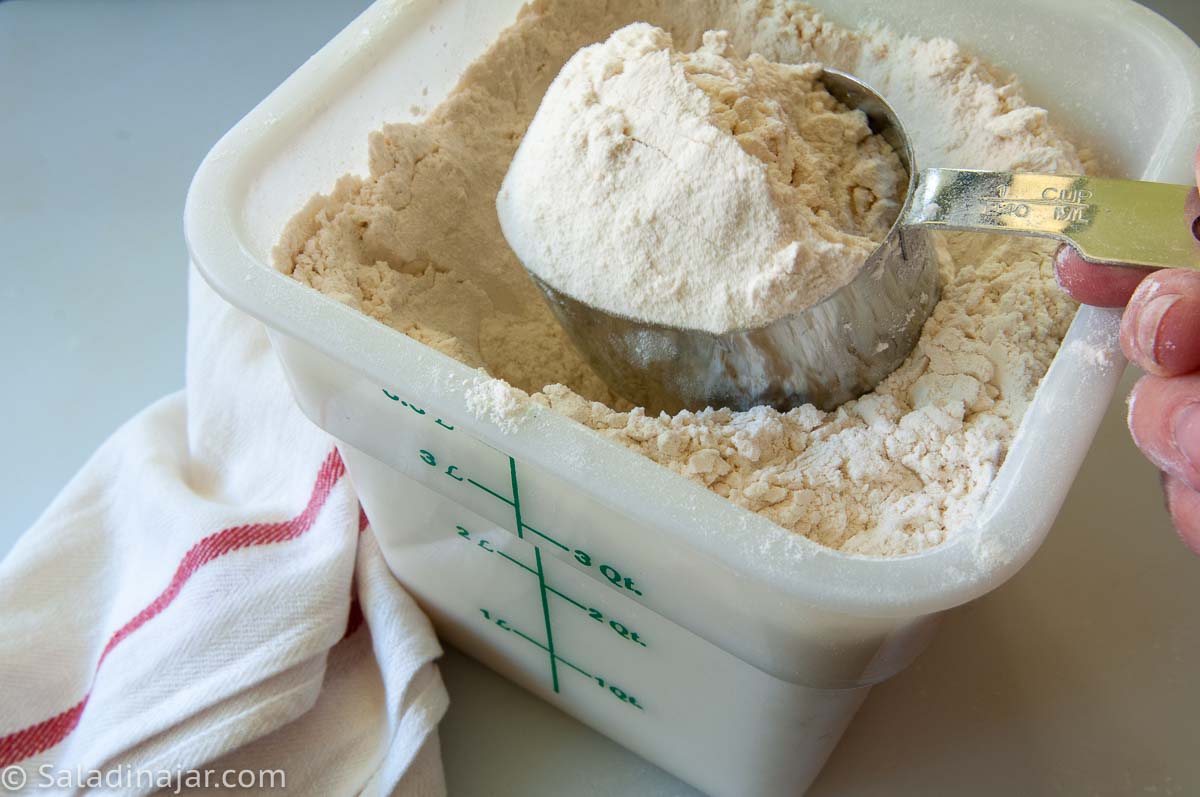
If you are a flour scooper, don’t feel bad. Sticking a measuring cup down into a bag or canister of flour and then using it to scoop it full of flour comes naturally, especially when you’re in a hurry.
For example…
Have you ever watched a little kid bake? The first time I handed my 7 yr. old granddaughter a measuring cup and told her to fill it with flour for some brownies, she pushed the cup into a canister of flour and scooped it up to fill it. When it wasn’t quite full on one side and way too full on the other, she used her little fingers to pat it down until it was only slightly uneven.
No-o-o-o-o-o-o!
Her brownies were good even though I didn’t correct her measuring technique. Some cake and cookie recipes are more forgiving than others.
When it comes to bread, as little as one extra tablespoon of flour can make the difference between fabulous and ho-hum bread.
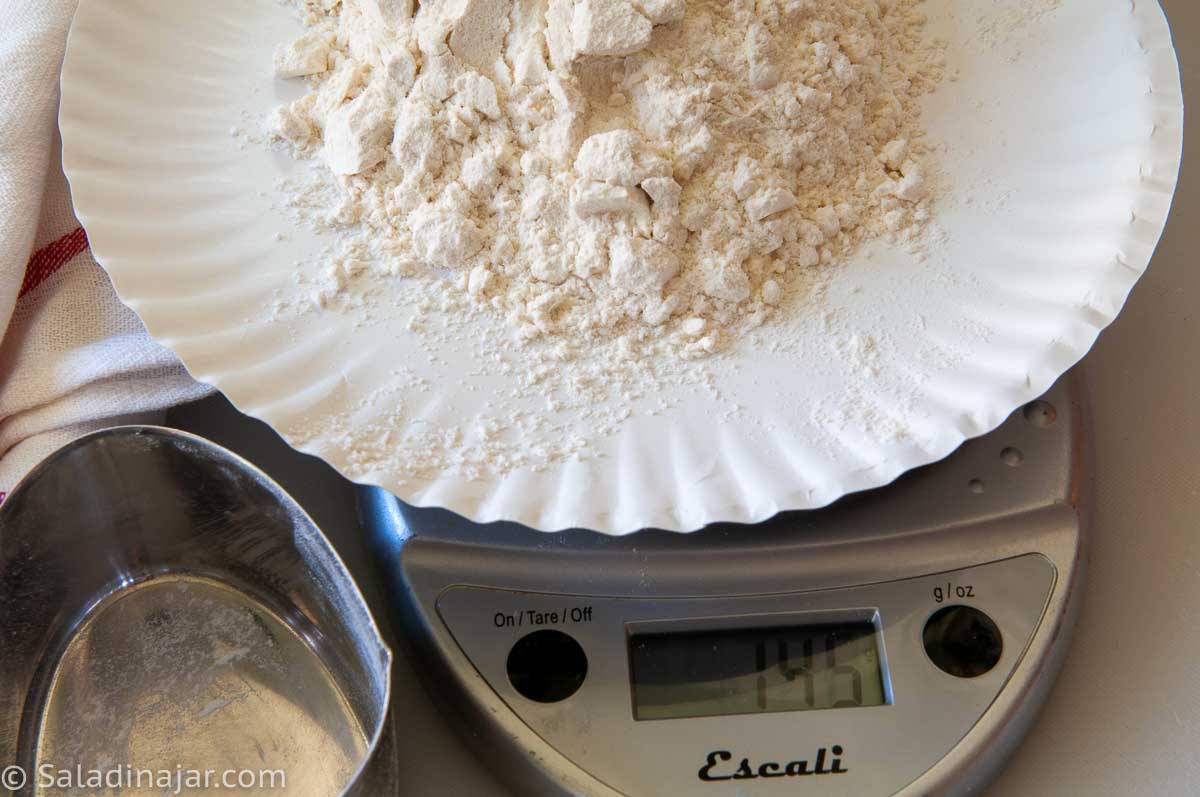
A Better Way To Measure Flour for Bread
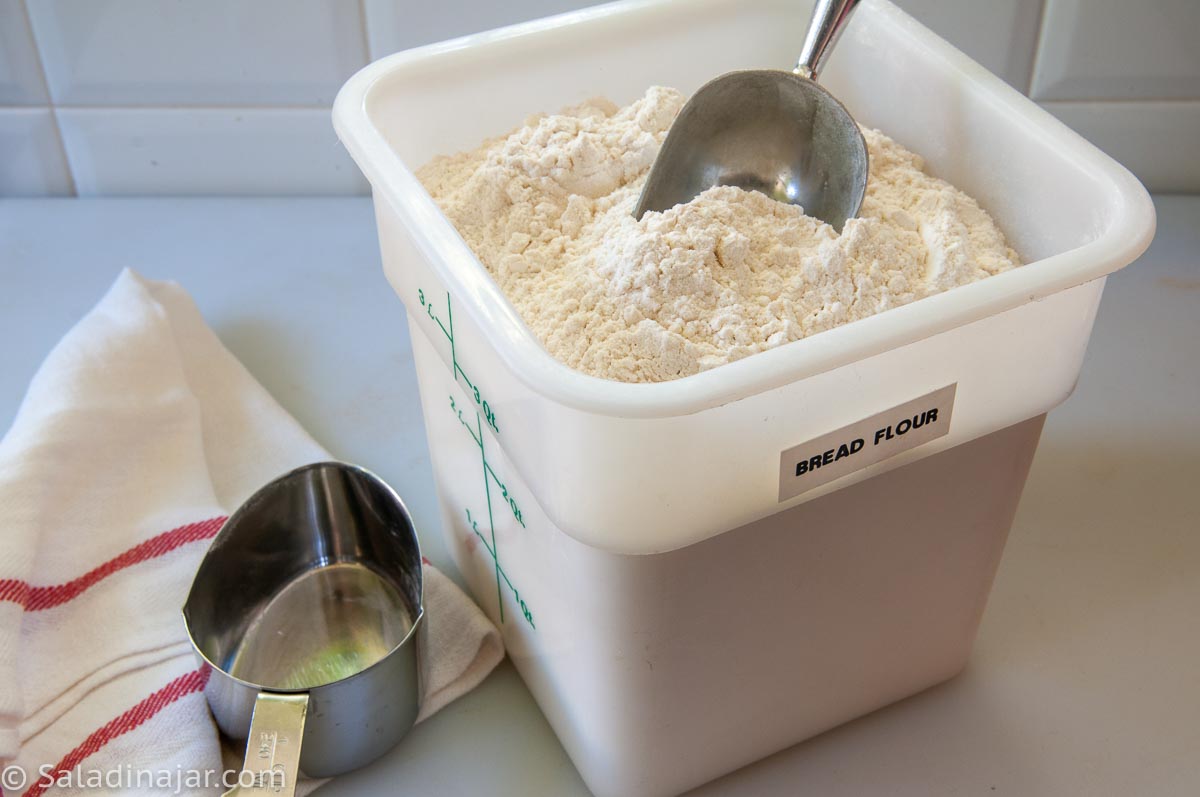
Ready to measure? Use a fork (first choice), spoon, or scoop to stir the flour. Then, lightly spoon the flour into your measuring cup. After experimenting, I found that using a fork to fill a measuring cup results in the most accurate measurement, even if it takes a little longer.
Don’t pat the flour down with your hands, a spatula, or a knife. Don’t tap it on the counter to level it. Flour should never be packed.
Instead, use the straight edge of a knife to delicately scrape across the top of the cup to level and make an accurate measure.
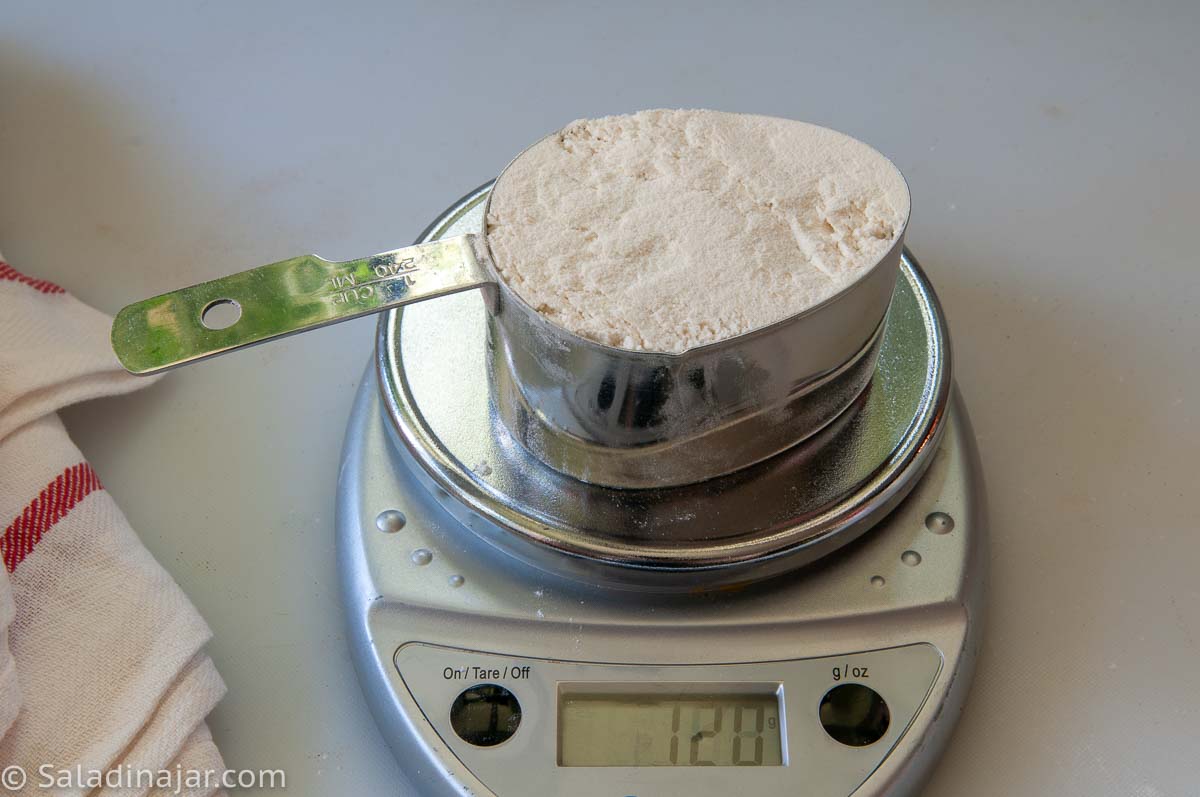
📌Kitchen Secret📌
Always keep a fork in your flour bag or flour canister. When you are ready to measure, you don’t have to look for something to fluff or stir up the flour.
📌Kitchen Secret📌
A roomy flour canister or a large plastic storage container makes measuring with a cup more manageable. In addition, it’s less likely you will hit the side of the container as you fill your measuring cup and dump flour on your counter.
I couldn’t find any plastic canisters like mine (seen above) on Amazon, but they only cost around $5 at a restaurant supply.
2. Don’t use a coffee mug to measure a cup of flour
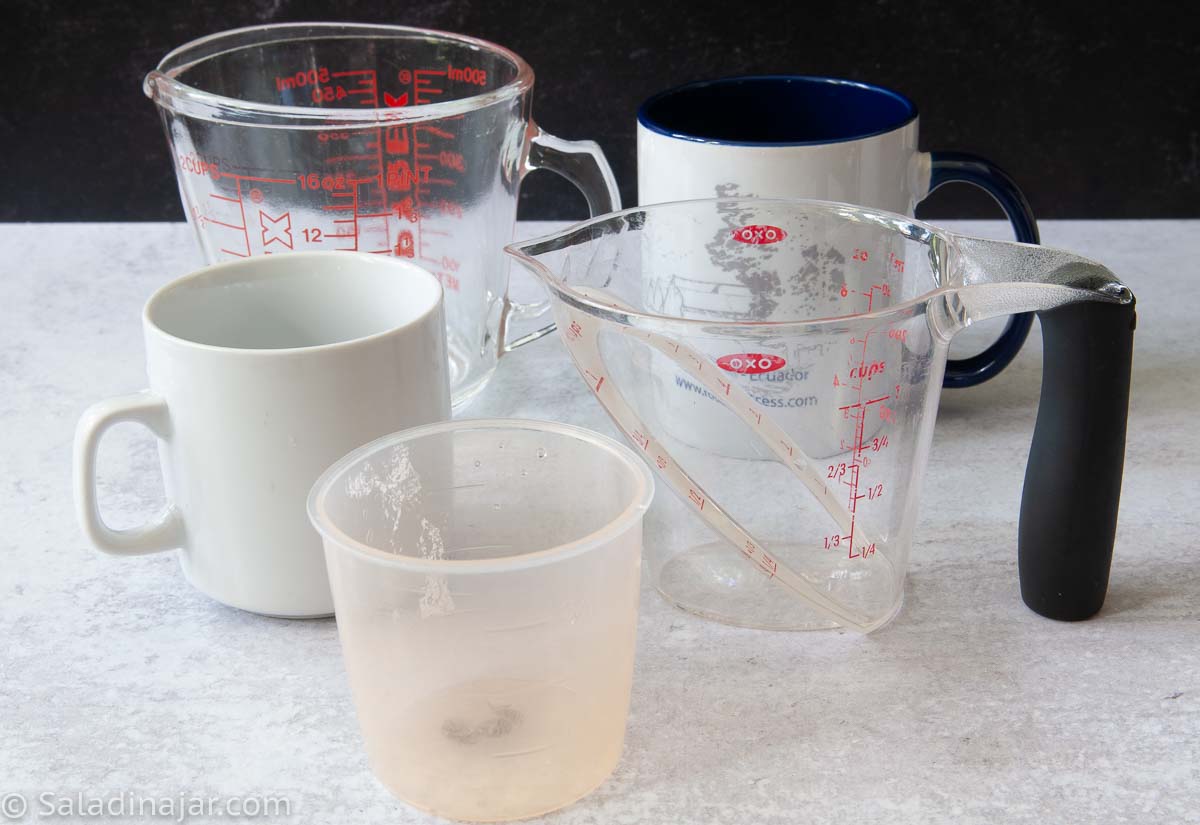
It’s essential to use a standard measuring cup designed for dry ingredients when measuring flour for bread. Coffee mugs, rice-cooker measuring cups, liquid measuring cups, espresso cups, plastic drinking cups, etc., do not qualify.
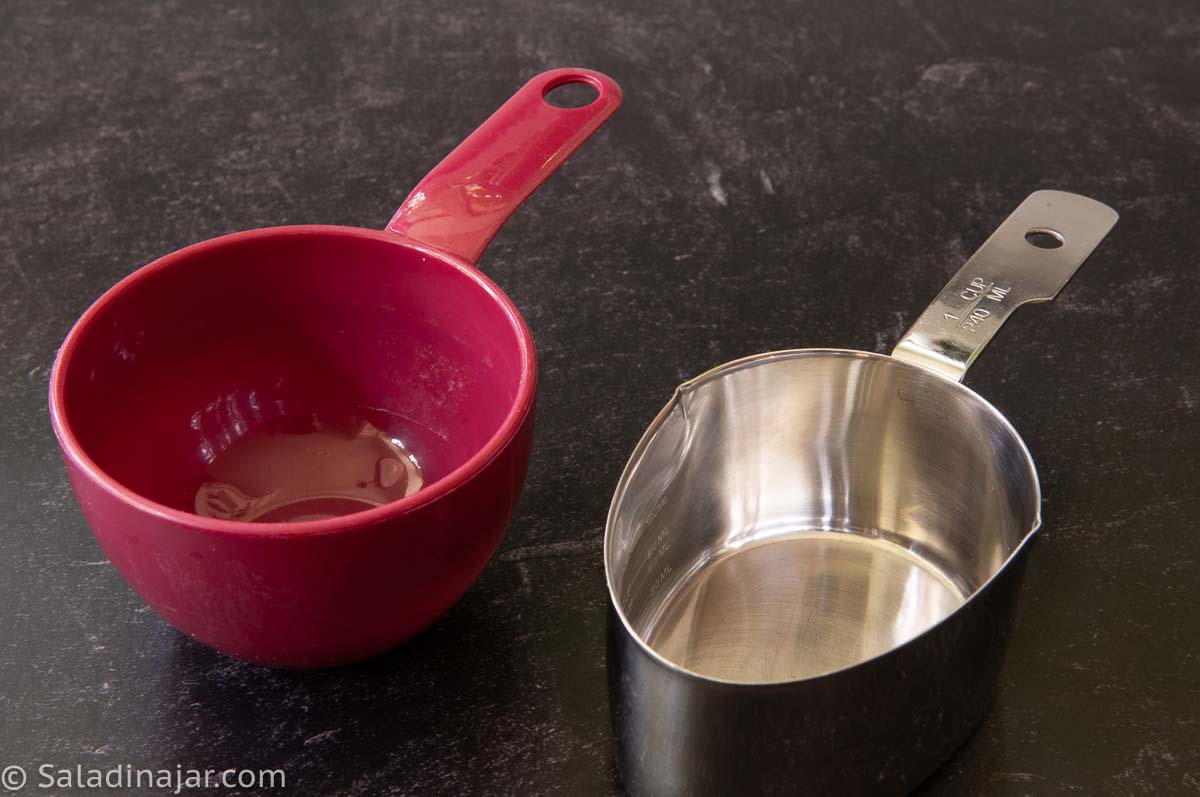
Measuring cups can be super cheap–especially at the dollar store. I prefer measuring cups with a rounded bottom, similar to the red plastic cup (paid link) shown in the picture above. They are easier to clean when using them for things like honey or shortening.
Metal measuring cups (paid link) are more durable. I found these metal cups with rounded bottoms (paid link) that are going onto my Christmas list.
I know there are some cultures and some cooks who rarely measure anything. But please hear me on this.
You are more likely to experience success with your bread when you get serious about measuring accurately. A couple of glugs of liquid, a dump of flour, and a few pinches of salt, sugar, and yeast may yield an unpleasant surprise.
3. Don’t downplay the value of a digital kitchen scale
You may have heard that weighing flour is better when making bread. If you hope to become a good bread maker without years and years of experience, buy yourself a digital kitchen scale (paid link).
Besides dependable accuracy, there’s another reason to weigh your flour. It’s convenient!
Place your bread machine pan or bowl on the scales, zero it out, and scoop the flour into the pan without stirring first or using a knife to level anything. (Watch the video to watch this in action.)
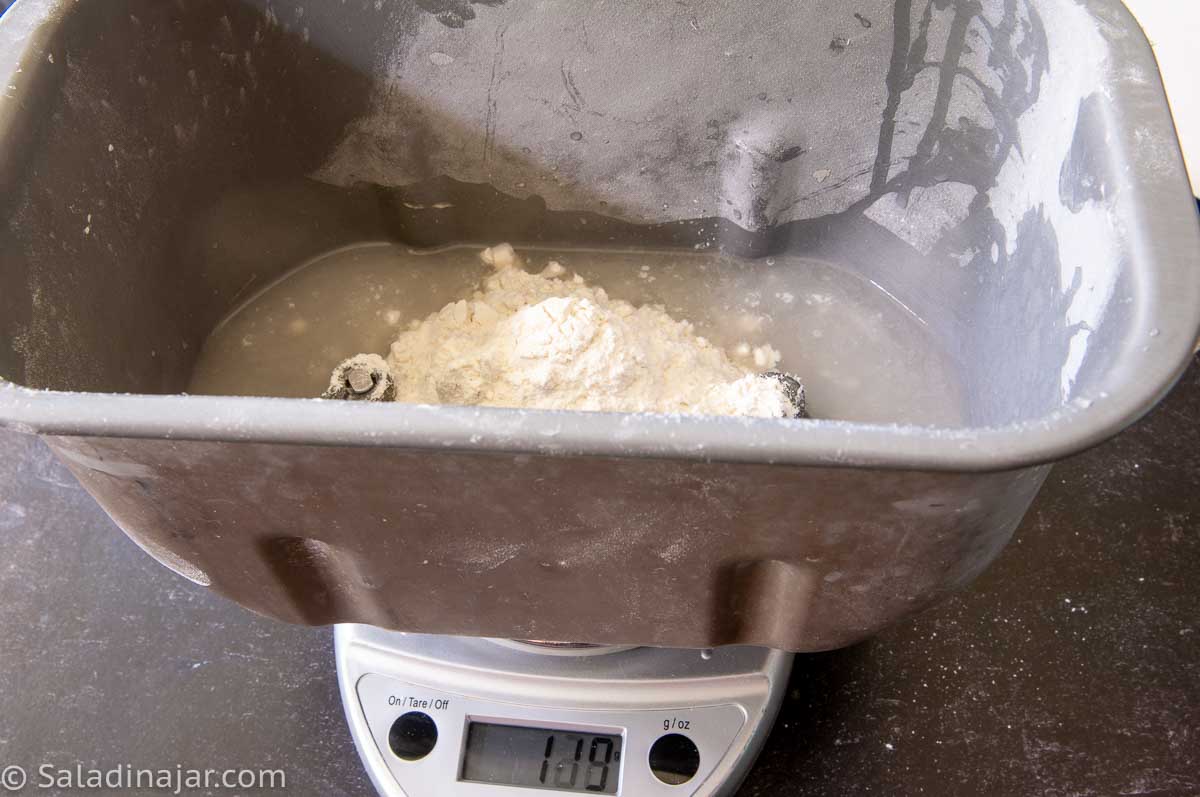
How can I measure flour accurately without using a measuring cup?
Use a digital scale (paid link). There are two methods, and neither is difficult.
Before you start, be sure your scales are set to the correct measuring unit specified in the recipe. Some specify grams, others ounces.
- Turn on your scale AFTER you set your bowl or bread machine pan on top of the scales. The scale should read “0,” regardless of how many ingredients have been added to the pan.
Start scooping flour in until you reach the number called for in the recipe. (No need to stir first.) - Turn your digital scale on BEFORE you set your bowl on the scales. After you set the pan or bowl onto the scales, hit the TARE button to bring the number in the window back to “0.” (This is what I mean by “zero it out.”)
Now add flour until it reads the correct amount needed for your recipe.
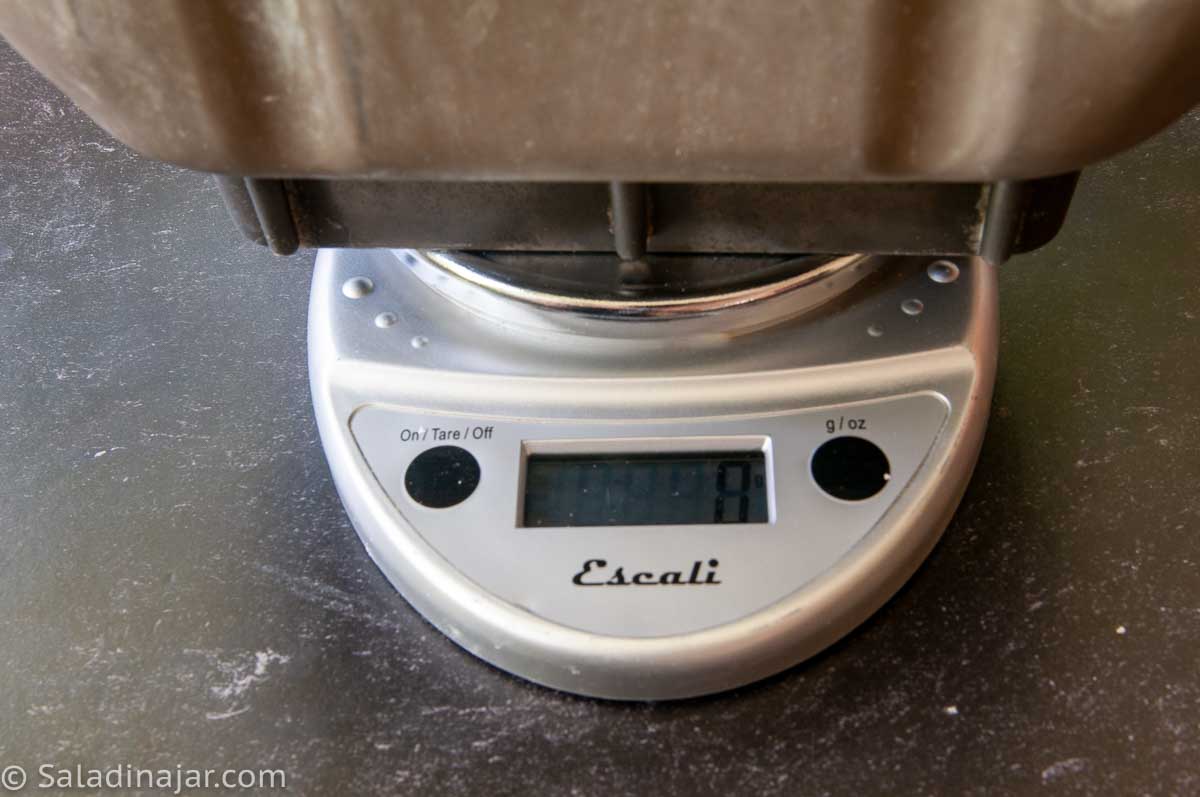
4. Don’t sift the flour before measuring
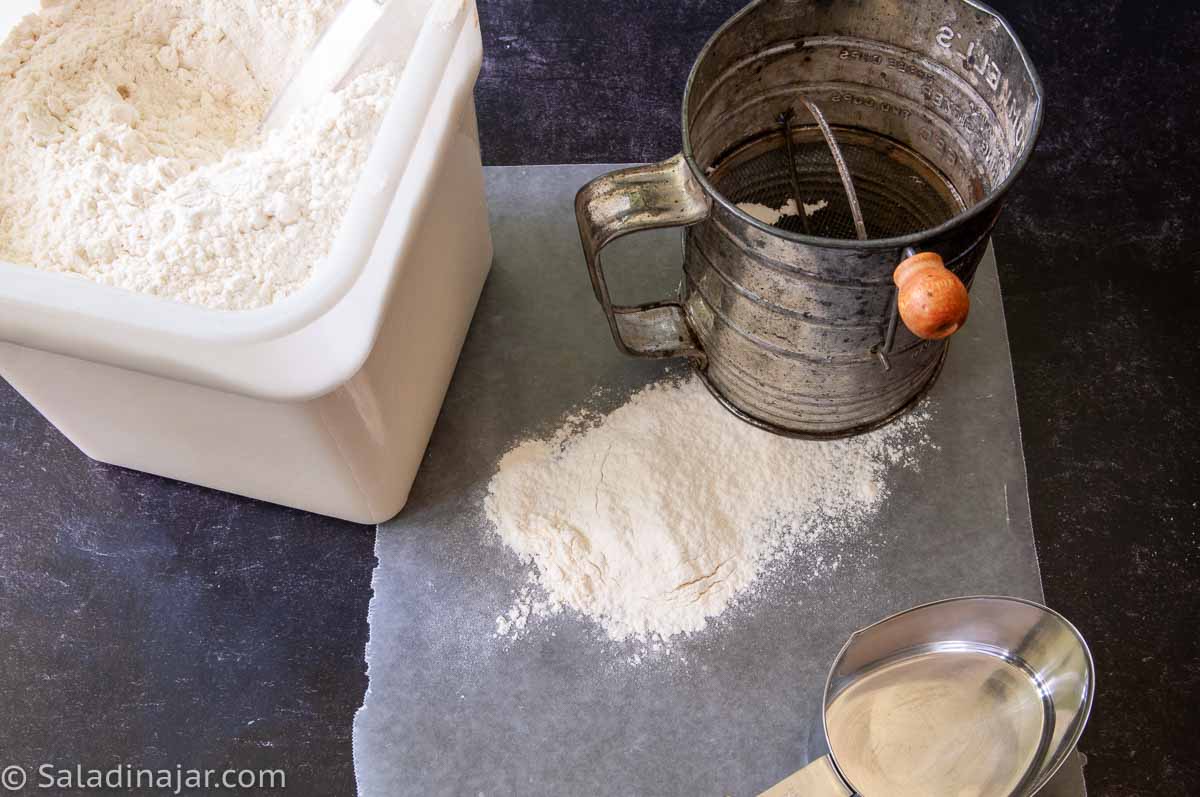
We are not making angel food cake here. Stirring with a spoon or fluffing with a fork is sufficient.
Sifting flour before measuring increases volume. This can result in too little flour. In other words, your dough will most likely be too sticky if you sift first.
5. Don’t wear black when measuring flour
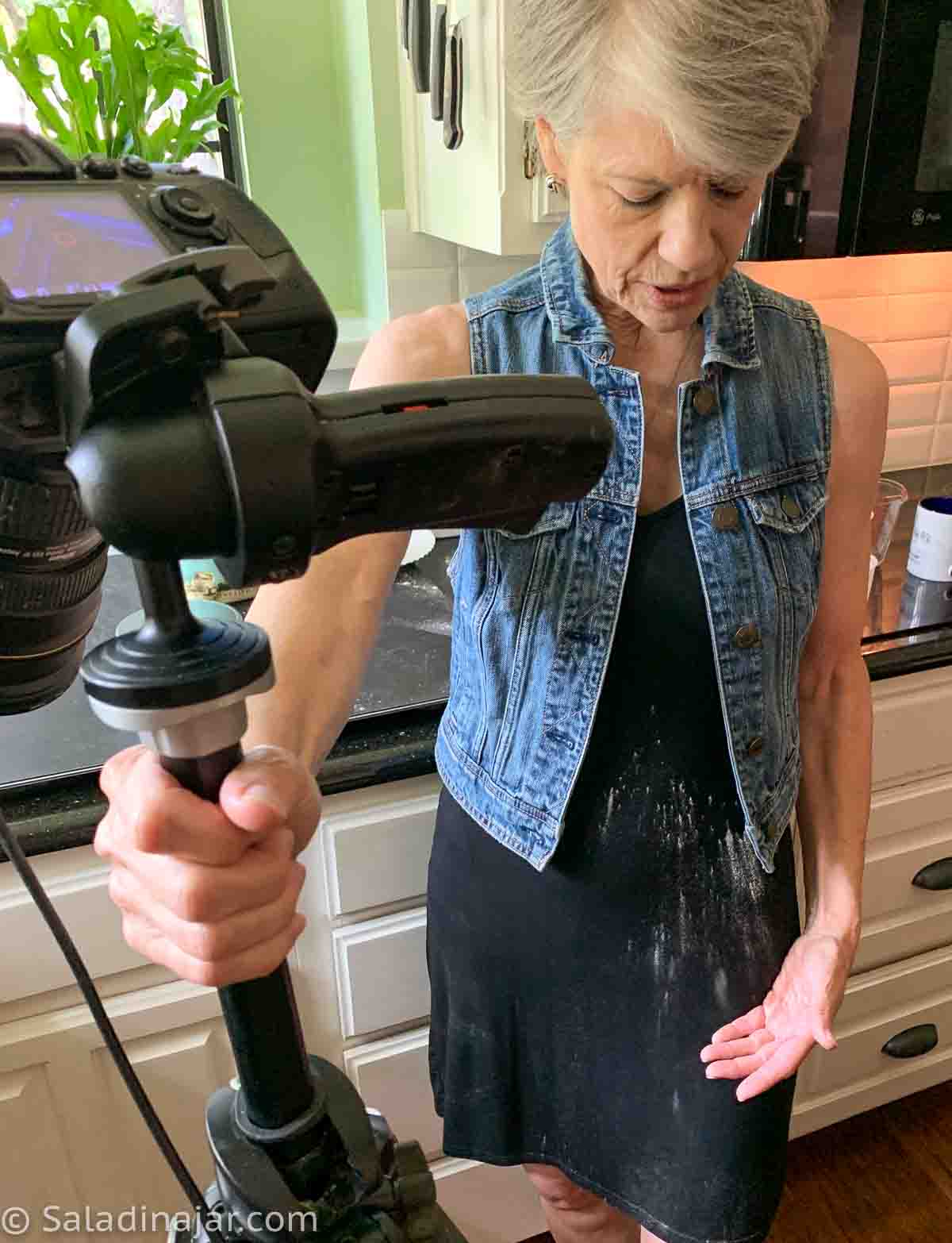
I know. Wear an apron. 🙂
FAQ About Measuring Flour
1. What if I want to weigh my flour, but only cup measurements are listed in the recipe?
If you want to confuse yourself, search the internet for how much one cup of unbleached all-purpose flour weighs. The variance in answers (from seemingly reputable sources) will blow your mind.
Now google whole wheat flour. The differences are even greater.
I recommend deciding which source you like or trust the most and sticking with it for consistency. Personally, I use the chart from King Arthur Flour. They say that 1 cup of bread flour or unbleached all-purpose flour equals 4-1/4 ounces or 120 grams.
Speaking of recipes without flour weights, I am working on revising all of my bread recipes to show weights. Unfortunately, I have a ways to go. Until I finish, you can assume 1 cup in any of my recipes equals 120 grams.
2. What about the “scoop-and-sweep method”?
While researching this post, I read in Dorie Greenspan’s Baking cookbook(paid link) (one of my favorites) how she likes to measure flour.
“I measure flour using the scoop-and-sweep method, which I learned from Julia Child. To use this technique, first aerate the flour by tossing it with a fork or a knife, then dip your measuring cup into the flour bin and scoop up enough flour to have it mound over the top. Finally, take a straightedge, such as the back of a knife, and sweep it across the top of the measuring cup to level it. When you scoop and when you sweep, you should not press on the flour and pack it down.”
–Dorie Greenspan
I tried this method and could not for the life of me come up with a cup of flour that weighed 120 grams. My results were closer to 130 grams or more.
I’m only bringing this up to illustrate a VERY IMPORTANT POINT. Unless you know exactly how a recipe author measured the flour, a cup measurement without a weight included is only an estimate.
In Dorie’s case, she tells you her method. So check the author’s notes for this information.
If you can’t find it, you can learn to adjust the liquid/flour proportions manually by observing the dough as the bread mixes and kneads.
3. Does it really matter if I use all-purpose flour instead of bread flour?
Although this is somewhat unrelated to measuring, I get this question so often I want to address it while we’re talking about flour.
Bread flour contains more protein, causing it to rise higher in a bread recipe. It also lends a chewier texture to the bread. Usually, it requires slightly more liquid to make the dough perfect.
All-purpose flour will need less liquid and make a softer dough. All-purpose flour is often specified in recipes for dinner rolls.
Can you substitute one for the other? Yes. The end product will still be good, with only minor differences. Watch the dough as it kneads to make sure the liquid proportions are correct. Correct proportions are best illustrated with fully kneaded dough that sticks to the side of your bread machine pan before pulling away cleanly.
Want to read more about making fabulous bread in a bread machine?
- Crusty French Bread (Mixed in a Bread Machine)
- How To Use a Bread Machine To Make Fabulous Bread
- 5 Reasons Why You Might Want a Bread Machine
- 6 Bread-Machine Secrets You Need To Know
If you have questions or suggestions, email me privately for a quick answer: Paula at saladinajar.com. Hope to see you again soon!

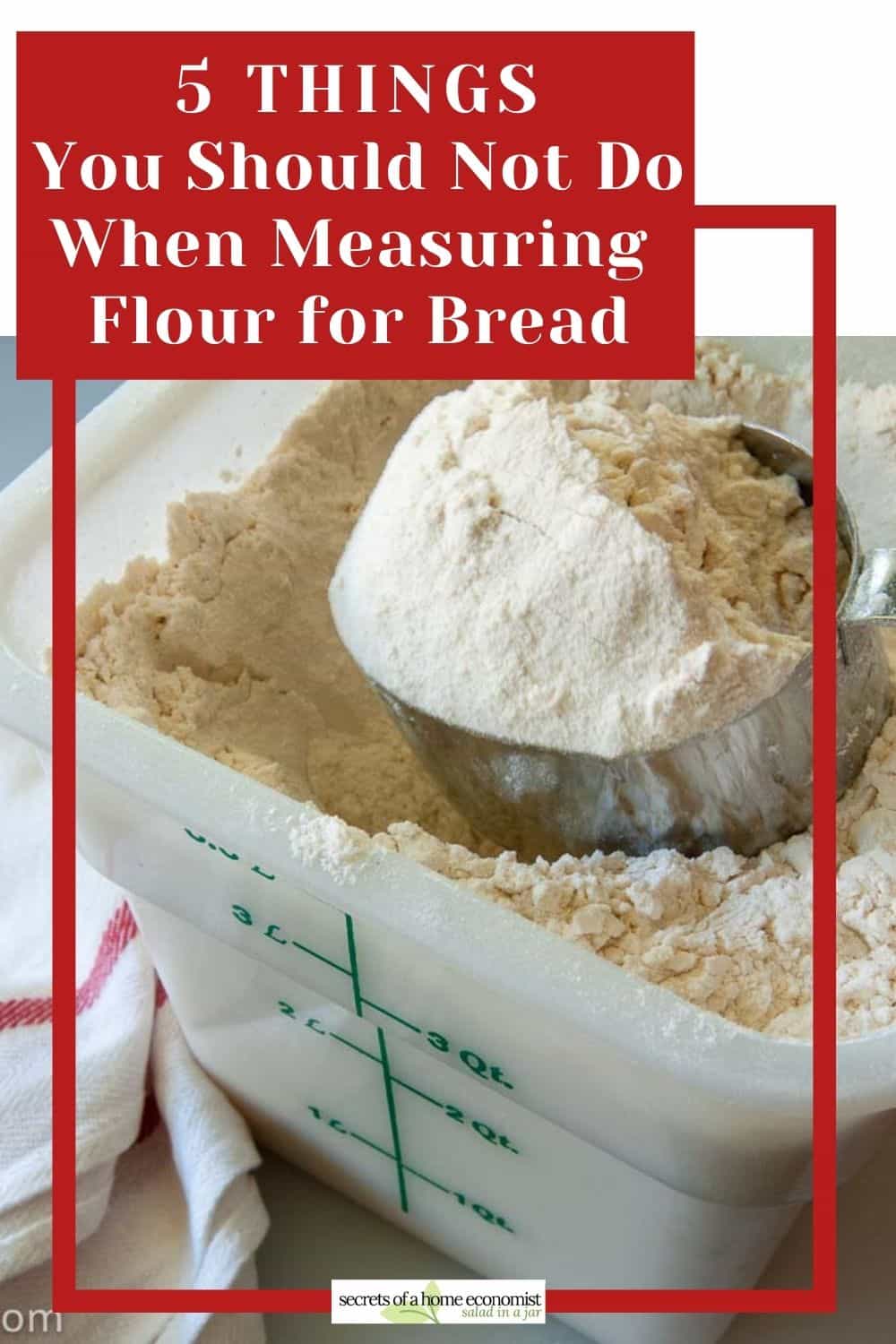

Paula Rhodes, owner
As a retired home economist, I created Saladinajar.com to share my belief that you don’t have to be a chef to find joy in creating homemade food worth sharing. Bread machines (used in an unconventional way), homemade yogurt, and quick microwave recipes are my specialty.